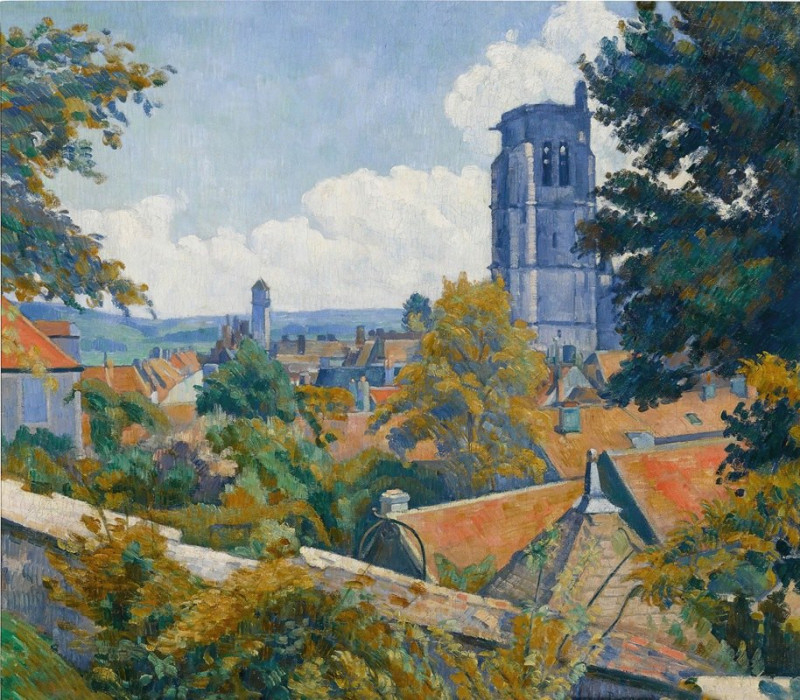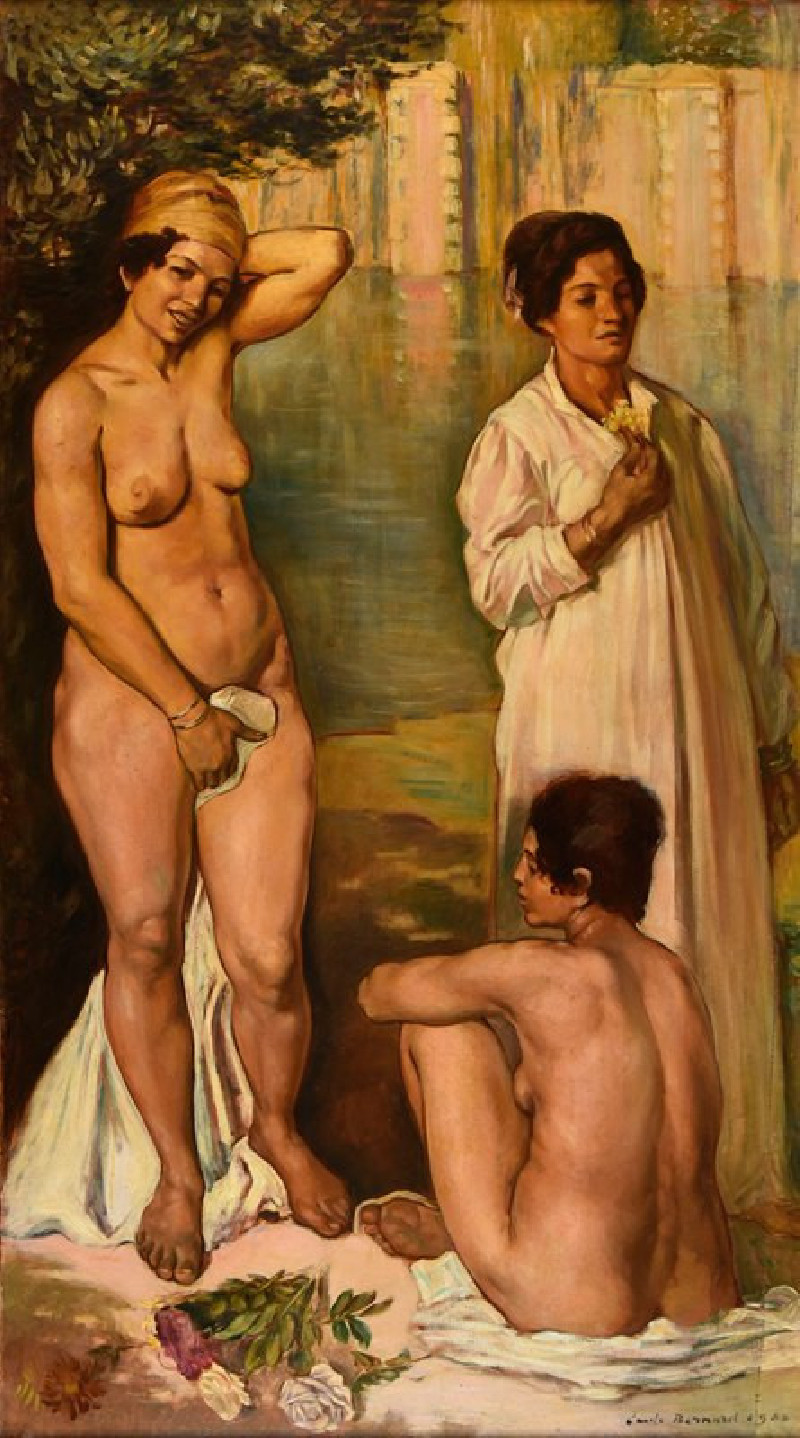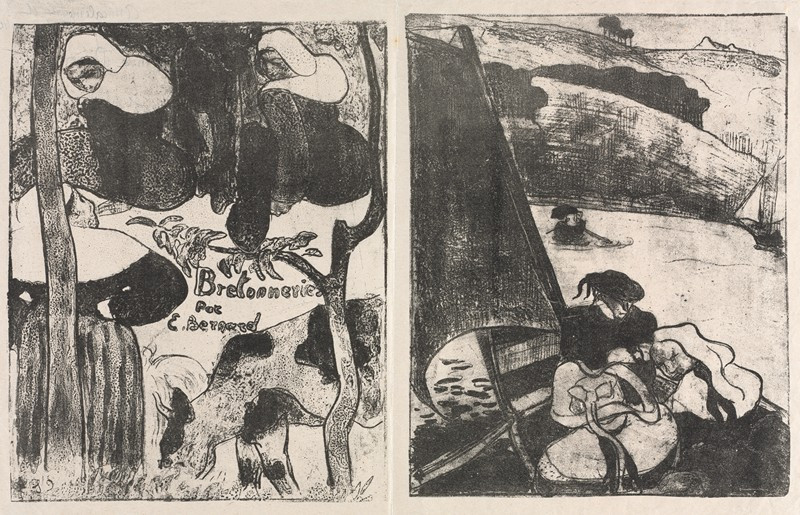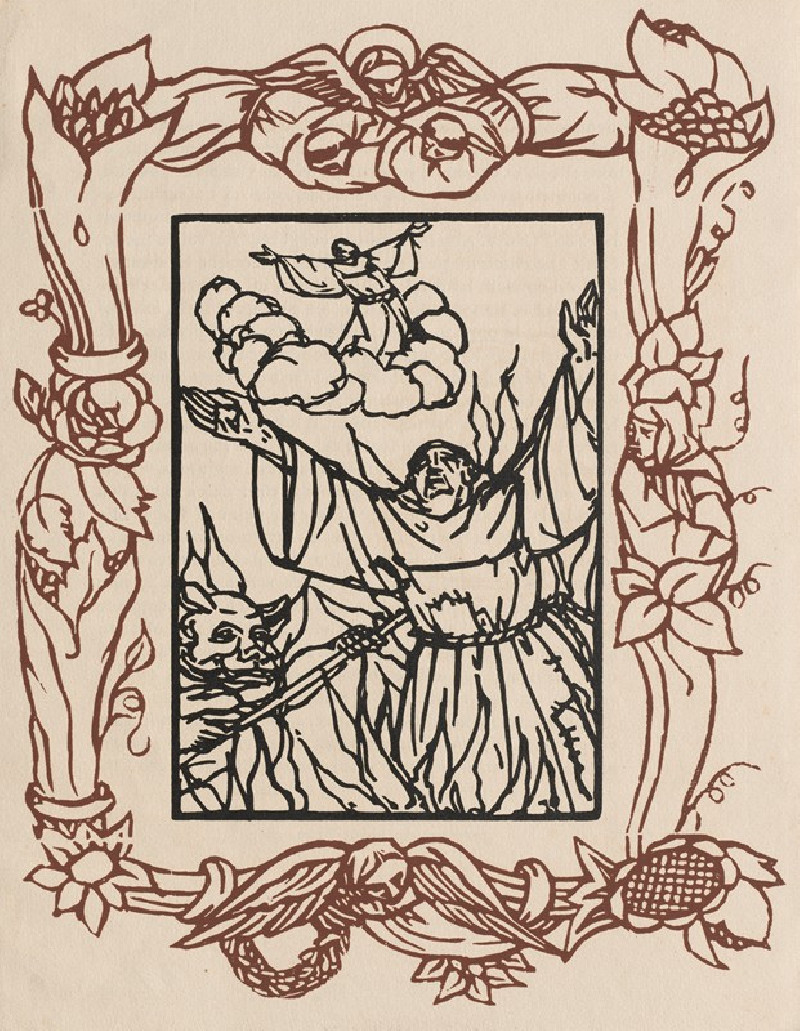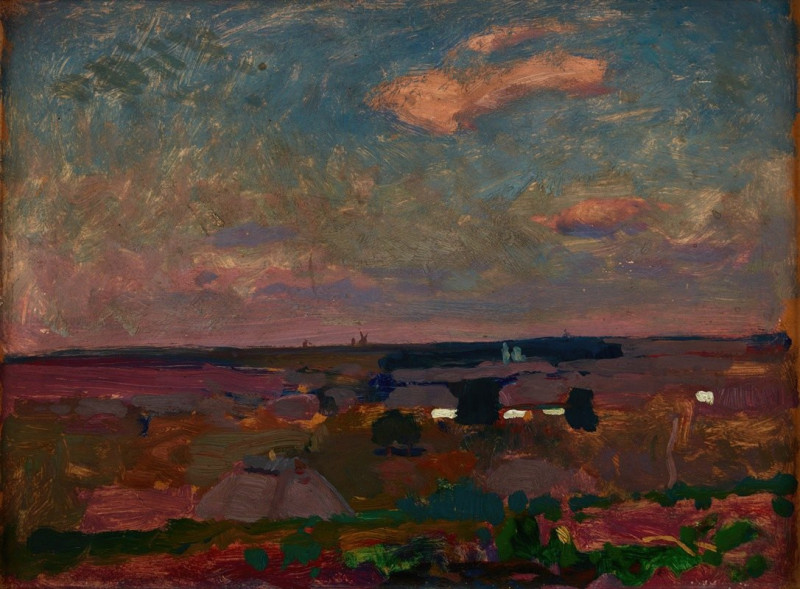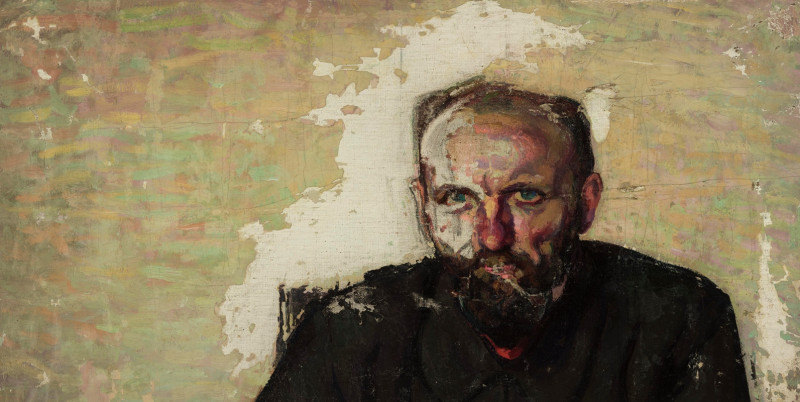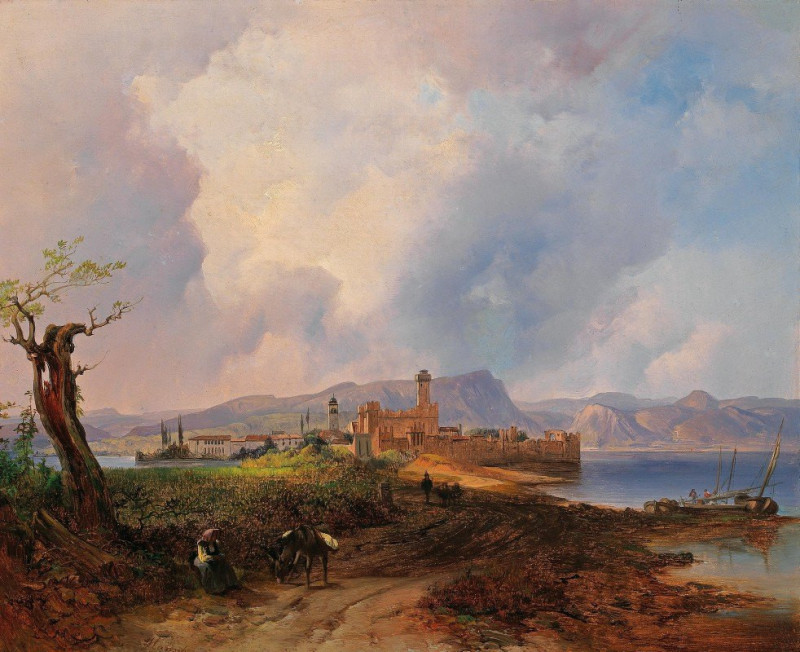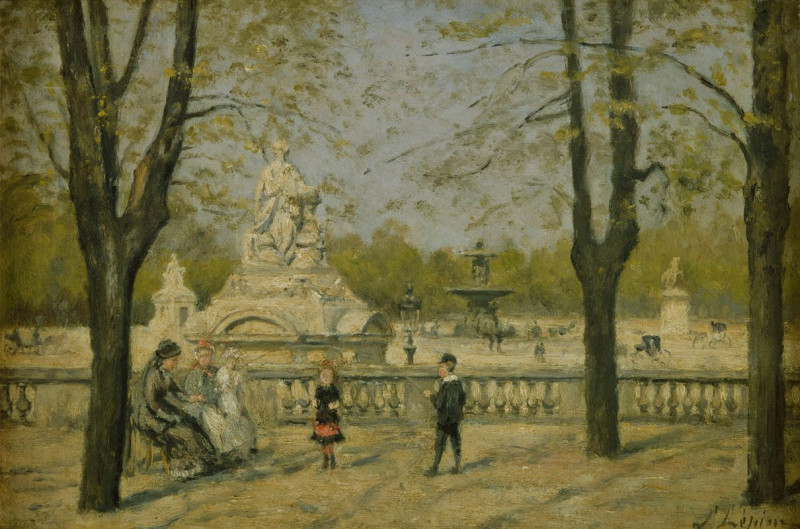Saint-Briac
Technique: Giclée quality print
Recommended by our customers
More about this artwork
Emile Bernard’s work "Saint-Briac" is a captivating landscape painting that transports viewers to the serene environments of Saint-Briac-sur-Mer, a charming coastal village in Brittany, France. Painted in 1886, this artwork is a stunning representation of the Post-Impressionist movement to which Bernard notably contributed.In "Saint-Briac," Bernard uses bold, defined brush strokes and a vivid color palette to build a textured depiction of the rural scenery. The foreground of the painting is dominated by warm gold and rich green fields punctuated by hay bales, suggesting the harvest period. These rounded forms create a rhythmic pattern that leads the viewer’s eye across the canvas to the solitary blue-roofed hut standing as the central focus of the composition.The background features a strip of tranquil sea, rendered in soft bluish tones that provide a calm contrast to the earthy colors of the fields. Above it, the sky is portrayed with a delicate, creamy yellow, infusing the scene with a gentle light that enhances the peaceful mood of the landscape.On the right side of the painting, a path runs towards the distance, with two figures placed subtly along its course. These figures, dressed in period attire, are portrayed in leisurely poses, adding a human touch to the rustic scene and emphasizing the harmonious relationship between the land and its inhabitants.Emile Bernard’s "Saint-Briac" is a poignant piece that not only captures the beauty of the French countryside but also reflects the artist’s skill in employing color and form to convey deep emotion and tranquility.
Delivery
Returns
Émile Henri Bernard (28 April 1868 – 16 April 1941) was a French Post-Impressionist painter and writer, who had artistic friendships with Vincent van Gogh, Paul Gauguin and Eugène Boch, and at a later time, Paul Cézanne. Most of his notable work was accomplished at a young age, in the years 1886 through 1897. He is also associated with Cloisonnism and Synthetism, two late 19th-century art movements. Less known is Bernard's literary work, comprising plays, poetry, and art criticism as well as art historical statements that contain first-hand information on the crucial period of modern art to which Bernard had contributed.











